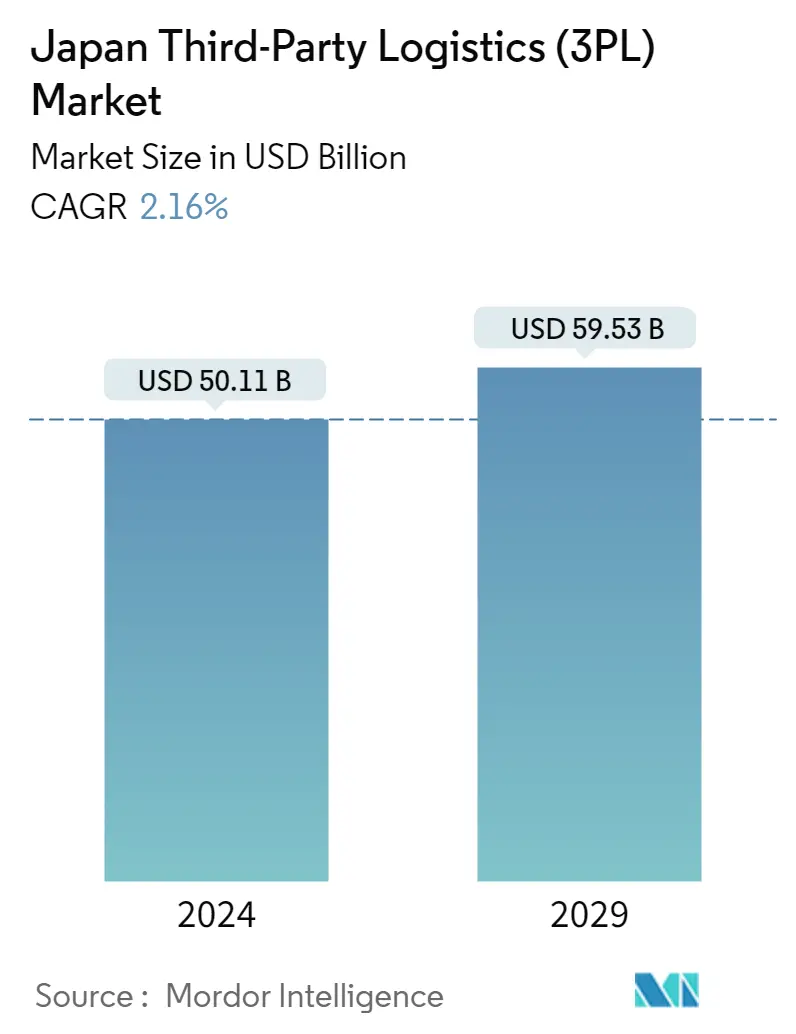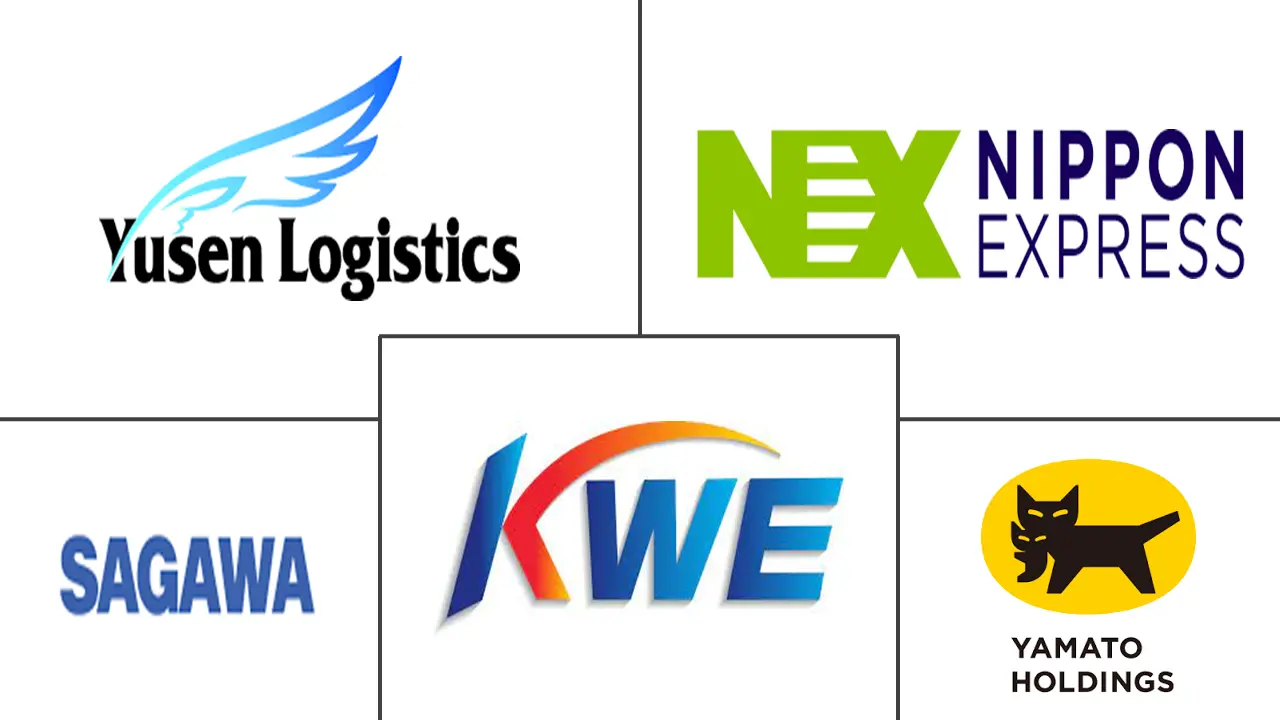Market Size of Japan Third-Party Logistics (3PL) Industry

| Study Period | 2019 - 2029 |
| Base Year For Estimation | 2023 |
| Market Size (2024) | USD 50.11 Billion |
| Market Size (2029) | USD 59.53 Billion |
| CAGR (2024 - 2029) | 2.16 % |
| Market Concentration | Medium |
Major Players
*Disclaimer: Major Players sorted in no particular order |
Need a report that reflects how COVID-19 has impacted this market and its growth?
Japan Third-Party Logistics (3PL) Market Analysis
The Japan Third-Party Logistics Market size is estimated at USD 50.11 billion in 2024, and is expected to reach USD 59.53 billion by 2029, growing at a CAGR of 2.16% during the forecast period (2024-2029).
- The COVID-19 epidemic had a direct effect on logistics companies, which move, store, and move goods.Logistics companies help businesses do business and get their products to customers. They became an important part of value chains both inside and outside of national borders. Hence, supply chain interruptions brought on by the pandemic could affect the sector's competitiveness, economic expansion, and job creation.
- Japan has made a lot of progress in the supply chain space over time. For example, it has embraced digital technologies to change a traditional industry. In the last few years, the social and economic factors that affect logistics have changed a lot. These factors include a shrinking or aging population, new ideas in some areas, more frequent deliveries of smaller goods, and different customer needs. In Japan, there is more demand for 3PL as large companies look at how their logistics networks work and outsource more tasks to 3PL providers to cut costs and improve efficiency.
- 3PL logistics firms are the ones who run supply chains and get materials and goods to all industries and consumers. Japan, one of the biggest economies in East Asia, relies on 3PL logistics a lot because of its manufacturing industry. As a result, organizations like Yamato Holdings are among the top logistics providers globally. 120 million people in the archipelago handled 4.71 billion tons of domestic freight, and foreign trade added 900 million tons more.
- Since 2000, there has been a big rise in the need for large, modern logistics leasing facilities in Japan. Outsourcing logistics operations, imbalances in corporate real estate, and moving out of multiple old warehouses all contributed to the rise. The freight and logistics industry in Japan is a big part of the economy, making up more than 5% of the GDP.
- The logistics business is known for its fierce cost competitiveness. To outbid rivals, sophisticated coordination and economies of scale are required. Through the use of "third-party logistics," sometimes known as "3PL," logistics firms have begun to streamline their operations. Automation and artificial intelligence (AI) are further tools for cost control.
It's likely that the logistics systems industry will grow to include more of these technical solutions. Although automated warehouses are now in use, it will be some time before fully autonomous trucks are allowed on the roads. Automation advancements cannot arrive soon enough for Japan. Its logistics sector is experiencing a manpower deficit, and on top of that, drivers are aging quickly, endangering the availability of services at fair prices. Two goals of this effort are to increase productivity in the trucking sector and to foster work environments that attract and retain older and female drivers. It has to be seen whether this tactic stabilizes the market effectively enough until automation advances further.
